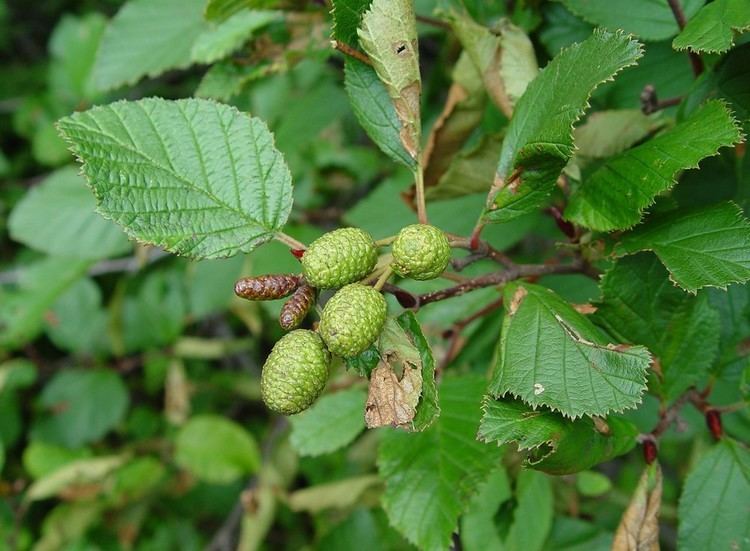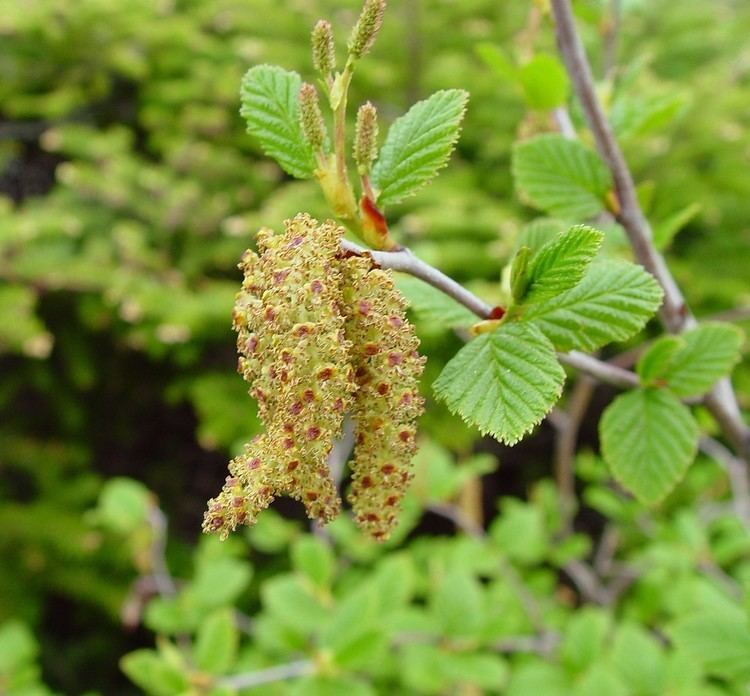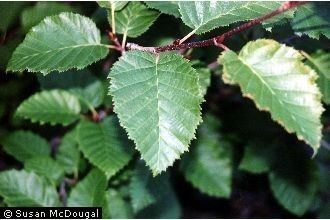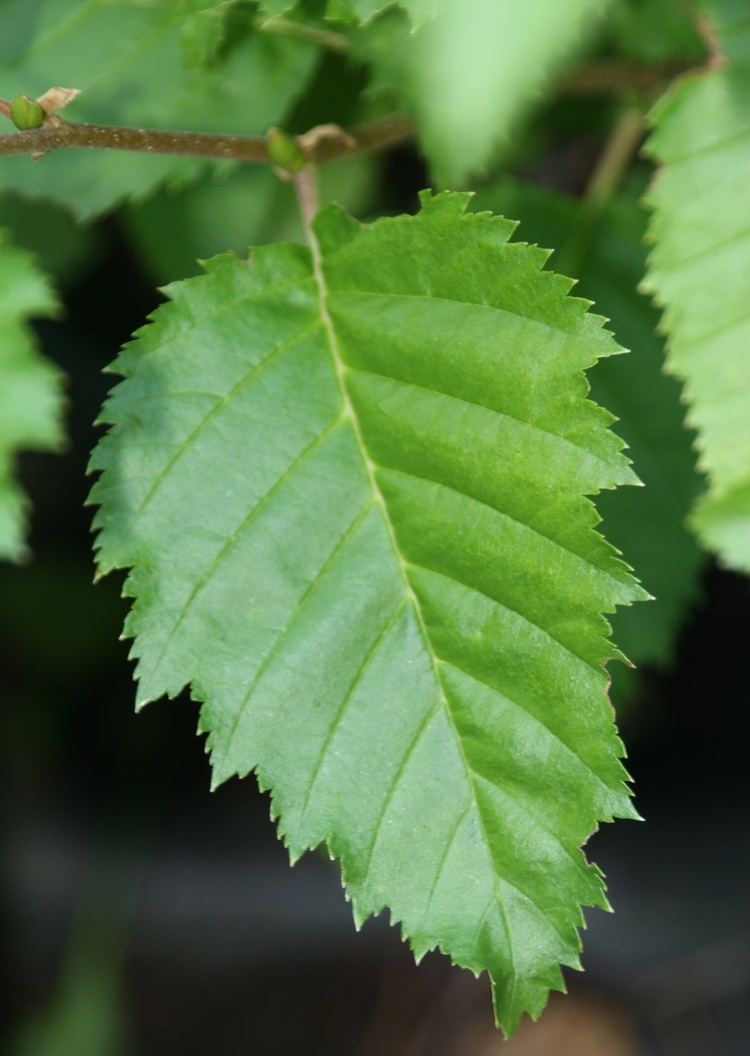Kingdom Plantae Family Betulaceae Subgenus Alnobetula Higher classification Alder | Order Fagales Genus Alnus Scientific name Alnus viridis Rank Species | |
 | ||
Similar Alder, Alnus incana, Alnus glutinosa, Alnus cordata, Alnus rubra | ||
Alnus viridis (green alder) is an alder distributed widely across the cooler parts of the Northern Hemisphere.
Contents
Description

It is a large shrub or small tree 3–12 m tall with smooth grey bark even in old age. The leaves are shiny green with light green undersurfaces, ovoid, 3–8 cm long and 2–6 cm broad. The flowers are catkins, appearing late in spring after the leaves emerge (unlike other alders which flower before leafing out); the male catkins are pendulous, 4–8 cm long, the female catkins 1 cm long and 0.7 cm broad when mature in late autumn, in clusters of 3–10 on a branched stem. The seeds are small, 1–2 mm long, light brown with a narrow encircling wing.
Distribution
There are four to six subspecies, some treated as separate species by some authors:

A. viridis is classed as an environmental weed in New Zealand.
Ecology

A. viridis has a shallow root system, and is marked not only by vigorous production of stump suckers, but also by root suckers.

A. viridis is a light-demanding, fast-growing shrub that grows well on poorer soils. In many areas, it is a highly characteristic colonist of avalanche chutes in mountains, where potentially competing larger trees are killed by regular avalanche damage. A. viridis survives the avalanches through its ability to re-grow from the roots and broken stumps. Unlike some other alders, it does require moist soil, and is a colonist of screes and shallow stony slopes. It also commonly grows on subarctic river gravels, particularly in northern Siberia, Alaska and Canada, occupying areas similarly disrupted by ice floes during spring river ice breakup; in this habitat it commonly occurs mixed with shrubby willows.
Uses

It is sometimes used for afforestation on infertile soils which it enriches by means of its nitrogen-fixing nodules, while not growing large enough to compete with the intended timber crop. A. sinuata can add 55 lbs of nitrogen per acre per year to the soil. Alnus viridis leaves have been used in the traditional Austrian medicine externally or internally as tea for treatment of infections and fever.

